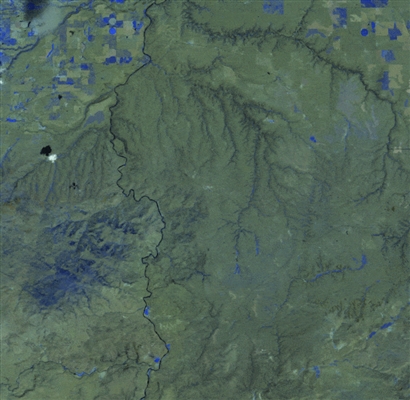Washing the nasal passages is an effective way to prevent colds. But what if you already have a stuffy nose? Will rinsing help in such a situation? In order to answer this question, you first need to find out how to rinse your nose with congestion and determine whether this drug will be useful in your particular case.
Washing solutions
Saline
This is the simplest option that you can cook at home without any problems. To do this, you need to take 1 liter of warm boiled water and dissolve 9 grams of ordinary table salt in it - this is about 1 level teaspoon. This concentration is the closest in salt content to the physical parameters of our blood.
Important! Salt must not be iodized. Potassium iodide or potassium iodate added to this product can irritate the nasal mucosa.
The most effective flushing of the nasal cavities with saline will be with vasomotor rhinitis. This disorder is quite common in pregnant women in the second trimester of pregnancy. The increase in mucus production in the nasal cavity is due to the most serious hormonal changes in the body. Constantly stuffy nose causes discomfort to a pregnant woman. Eliminating nasal congestion with saline will be completely safe for both the mother and her child, unlike, for example, the use of vasoconstrictor nasal sprays.
Rinsing the nose with saline will be useful for adaptive rhinitis. It develops in infants during the first months of life and reflects the addiction (adaptation) of the body to radically changed conditions of existence. This condition does not require treatment, and rinsing the nose with saline will serve as a way to alleviate the child's condition. But it must be remembered that the technique for performing this procedure in young children has a number of important features. They are described in the corresponding article (link).
Tea
Yes, plain black tea can be a good way to cleanse your nasal passages. To prepare the solution, you need to take the already used and leafy tea leaves and pour boiling water over it again. Of course, tea powder in bags cannot be used in this case. Let the tea brew until it cools down to room temperature on its own. Then filter the tea leaves through cheesecloth and you can start rinsing.
The tea solution will be useful for vasomotor and, what is important, for allergic rhinitis. Nasal congestion with allergies is a manifestation of individual intolerance to certain biological compounds: pollen, animal hair, certain foods, etc.
Nasal congestion with allergies is a manifestation of individual intolerance to certain biological compounds: pollen, animal hair, certain foods, etc.
The mucus that forms in the nose with allergies is almost always abundant and watery. Thanks to this, it is able to remove itself from the nasal cavities on its own. That is, rinsing using saline solutions, aimed at liquefying and eliminating mucus, in this case will be ineffective. But tea brew has one feature: it contains a small amount of tannins. This means that it has a strengthening effect on the nasal mucosa, reducing vascular permeability, thereby reducing the intensity of mucus production.
Herbal infusions
Rinsing the nose with these solutions will be most effective both for preventing colds and for accelerating recovery from colds. This is explained by the fact that extracts and infusions of medicinal herbs are full-fledged phytopreparations with antimicrobial or antiviral effects, capable of relieving active inflammation of the mucous membrane and disinfecting it. The restriction on the use of herbs is their individual intolerance.
Here, the choice of what to rinse your nose with congestion is extremely large. This includes a variety of medicinal herbs and medications, the most common of which are:
- pharmacy chamomile;
- calendula;
- coltsfoot;
- white willow;
- medicinal sage;
- blackberry and plantain leaves;
- licorice;
- meadow clover.
Dried herbal mixtures are best obtained from pharmacies. Usually, a recipe for making an infusion is placed on the package, but in general it is required to use about 1 spoonful of the mixture for 1 cup of boiling water. Next, as with tea, you need to let the solution cool and remember to filter it through cheesecloth.
Important! Oak bark must not be added to the rinse infusion. Its powerful tanning effect will irritate the nasal mucosa.
Sea salt solution
This is a versatile option that will work for almost any case of nasal congestion, except allergies. The easiest way to buy sea salt is from pharmacies - today there is a wide selection of dry mixes. Next, you need to take 1-2 tablespoons of sea salt per 0.5 liters of hot water and stir thoroughly. Make sure that no solid particles remain in the solution, they can injure the mucous membrane. Let the liquid cool to room temperature and proceed to rinsing.
Ready-to-use salt solutions
The use of commercial ready-made solutions for rinsing the nasal passages is the simplest, but at the same time, the most expensive solution. From the point of view of the composition, "Aquamaris", "Aqualor", "Otrivin", "Marimer", "Dolphin" and other preparations do not have any special advantages over a sea salt solution prepared by hand. But they are convenient to use if you do not have time to dissolve the ingredients in water on your own and wait for it to cool. Like sea salt solution, these mixtures are versatile and are indicated for use for any cause of nasal congestion, except for allergies.
Remember that the most common common cold nasal congestion cannot be cured with home-made or commercial saline solutions. They can stop the infection only at the earliest stage of the disease. But, unfortunately, keeping track of the onset of a cold is quite difficult. Therefore, the vast majority of patients with acute respiratory viral infections or influenza will need special treatment with pharmacological drugs. At the same time, saline nasal washes will serve as a preventive measure against relapses and accelerate the healing process.
Results of the procedure
By rinsing the nasal cavities, several results can be achieved at once:
- Removal of microscopic dust particles, many of which may be allergenic substances, is the prevention of allergic rhinitis by cleaning the nasal passages.
- An increase in the strength of the vessels passing in the nose, which reduces their bleeding in the presence of a tendency to this violation.
- Partial disinfection of the nasal cavity, which reduces the risk of developing colds and inflammatory reactions on the mucous membrane.
- Improving the functioning of mucosal cells, which causes the activation of local immune defenses.
- Reducing swelling and normalizing nasal breathing.
- Removal of mucus, which is a suitable breeding ground for pathogenic microorganisms.
Important! If you have a stuffy nose after rinsing it, then you most likely have overcooled sinuses. To avoid this, stay at room temperature for at least an hour after the procedure.



